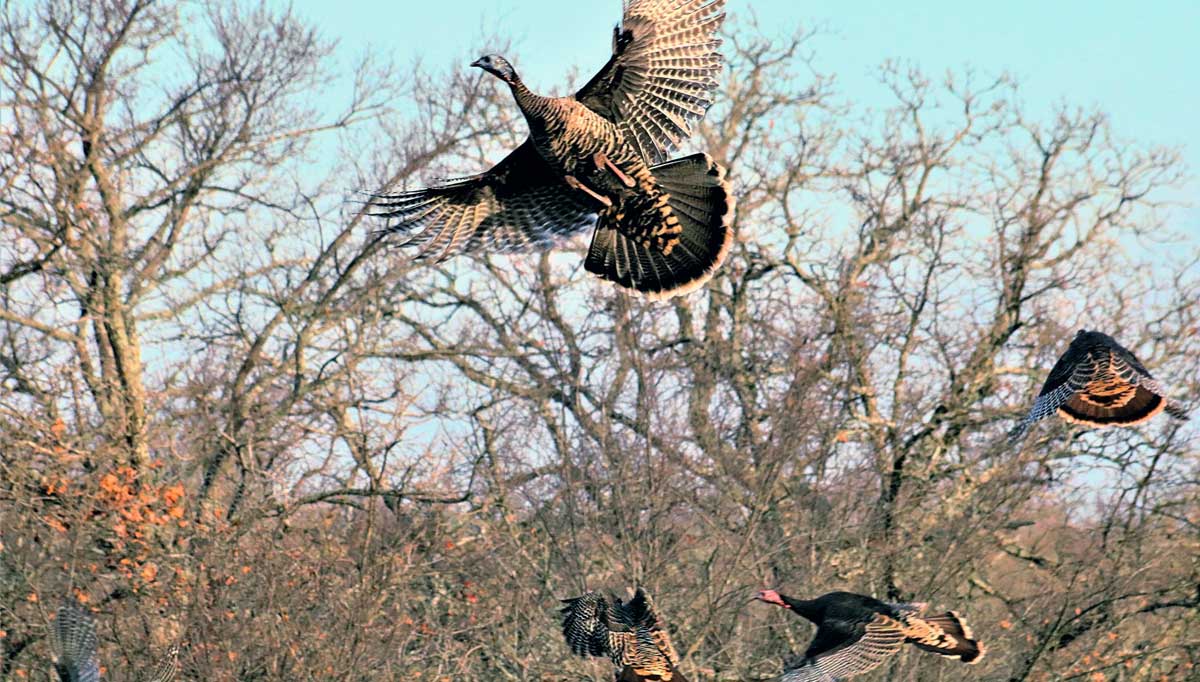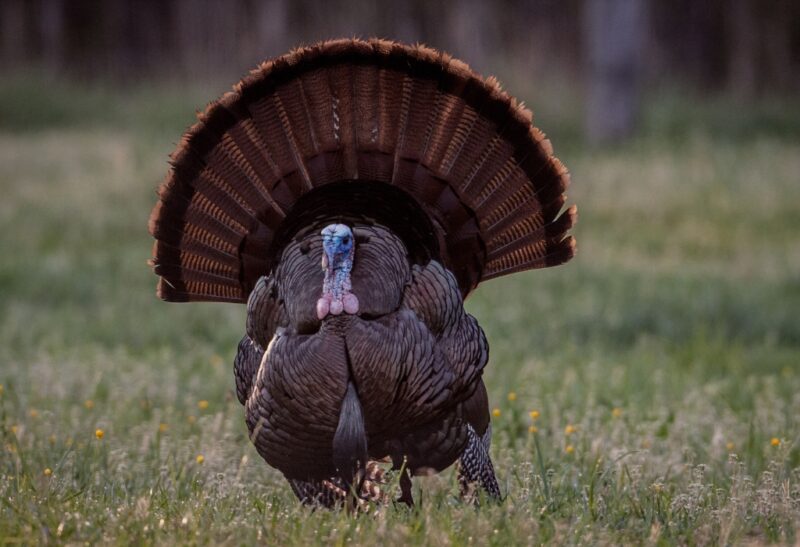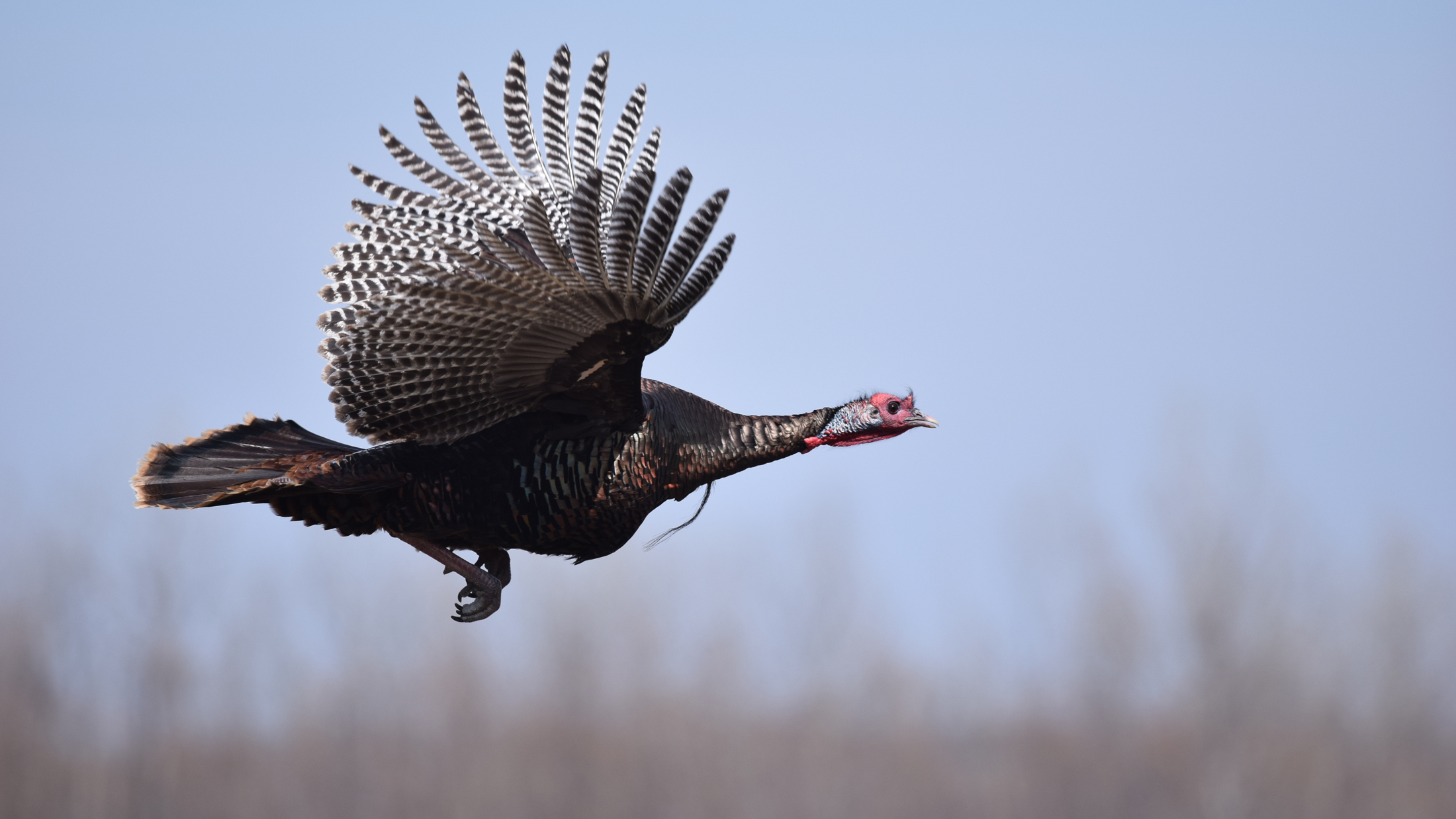Why Can't Turkeys Fly? Uncovering The Truth Behind Their Flightlessness
So, you ever wonder why turkeys can't fly? Like, seriously, they’ve got wings and everything, but they’re stuck on the ground like some kinda ground-bound bird. Well, buckle up, because we’re diving deep into this mystery. It’s not just about turkeys being lazy or bad at aerodynamics—it’s actually a fascinating blend of biology, evolution, and even human intervention. Stick around, and you’ll get the full scoop!
Let’s face it, turkeys have kind of a bad rep. They’re often seen as the “can’t-do” birds, stuck on the ground while other birds soar through the skies. But here’s the deal: turkeys aren’t totally useless when it comes to flying. In fact, they can actually flutter around a bit, but there’s a lot more to the story. This article is all about uncovering the truth behind why turkeys can’t really fly, and trust me, it’s way more interesting than you think.
And hey, if you’re wondering why this matters, well, it’s not just about turkeys. Understanding why they can’t fly gives us insight into how animals adapt to their environments, how humans have influenced certain species, and even how evolution works. So, whether you’re a bird enthusiast, a science nerd, or just someone who’s curious about the world, this is gonna be a wild ride.
Read also:British Airways Flight Nowhere The Experience That Takes You Everywhere
Daftar Isi
3. Turkey Evolution: How They Got Here
5. Anatomy of a Flightless Turkey
Read also:Exploring Rule 34 Sophie Rain A Comprehensive Guide
8. Science Behind Their Flightlessness
9. Human Impact on Turkey Flight
A Quick Bio of Turkeys
Before we dive into why turkeys can’t fly, let’s get to know these feathered friends a little better. Turkeys are native to North America, and they’ve been around for thousands of years. There are two main types of turkeys: wild turkeys and domesticated turkeys. While both have their own quirks, domesticated turkeys are the ones that really struggle with flying.
Here’s a quick snapshot of what makes turkeys tick:
Wild vs. Domesticated Turkeys
Wild turkeys are actually pretty good at flying, believe it or not. They can reach speeds of up to 55 mph in short bursts, and they use their flying ability to escape predators. On the other hand, domesticated turkeys, which are bred for food, are way heavier and lack the muscle power needed for sustained flight. It’s like comparing a sports car to a truck—both have engines, but one’s built for speed, and the other’s built for carrying stuff.
The Basics of Flight
Flight is a pretty complex process, and it requires a lot of things to go right. Birds need strong muscles, lightweight bones, and properly shaped wings to get off the ground. Turkeys, especially the domesticated ones, don’t tick all these boxes. Let’s break it down:
- Strong Muscles: Birds need powerful chest muscles to flap their wings and generate lift. Turkeys, especially the ones we eat, don’t have the muscle power needed for sustained flight.
- Lightweight Bones: Birds have hollow bones to reduce weight, making it easier for them to fly. Turkeys, on the other hand, have denser bones, which makes them heavier.
- Proper Wing Shape: The shape of a bird’s wings plays a big role in how well it can fly. Turkeys have wings that are more suited for short bursts of flight rather than long-distance travel.
Turkey Evolution: How They Got Here
To understand why turkeys can’t fly, we need to look at their evolutionary history. Turkeys have been around for millions of years, and they’ve adapted to their environment in some pretty interesting ways. Wild turkeys, for example, developed the ability to fly as a way to escape predators. But as humans started domesticating turkeys, things changed.
Domestication and Evolution
Domestication is basically the process of breeding animals for specific traits. In the case of turkeys, humans bred them to be bigger and meatier. This meant selecting for traits like larger bodies and more muscle mass, which made them less suited for flying. Over time, these traits became more pronounced, leading to the flightless turkeys we know today.
The Role of Domestication
Domestication has played a huge role in why turkeys can’t fly. When humans started breeding turkeys for food, they focused on traits that made them better for consumption, like size and weight. This came at the cost of their ability to fly. Think of it like breeding dogs—over time, certain breeds lose traits that their wild ancestors had because humans prioritize other characteristics.
And let’s not forget about selective breeding. Farmers have been selectively breeding turkeys for centuries, choosing the biggest, heaviest birds to reproduce. This has resulted in turkeys that are way too heavy to fly. It’s like trying to get a truck to fly—it’s just not gonna happen.
Anatomy of a Flightless Turkey
Let’s take a closer look at the anatomy of a turkey and see why it’s not built for flying. Turkeys have several physical characteristics that make flying difficult:
- Heavy Bodies: Domesticated turkeys can weigh up to 40 pounds, which is way too much for their wings to lift.
- Short Wings: Their wings are relatively short compared to their body size, making it hard to generate enough lift.
- Weak Muscles: Their chest muscles aren’t strong enough to sustain flight for long periods.
It’s like trying to fly with a backpack full of bricks—it’s just not gonna work.
Environmental Factors
Environment also plays a big role in why turkeys can’t fly. Wild turkeys live in forests and open fields, where they can use their flying ability to escape predators. Domesticated turkeys, on the other hand, live in controlled environments where they don’t need to fly. This has led to a decrease in their flying ability over time.
Adaptation to Environment
Animals adapt to their environments in different ways. For turkeys, living in a safe, controlled environment has meant they don’t need to fly anymore. It’s like how humans don’t need to run as fast as our ancestors did because we don’t have to escape predators anymore. Over time, these adaptations become more pronounced, leading to changes in behavior and physiology.
Debunking Turkey Myths
There are a lot of myths out there about why turkeys can’t fly. Some people think it’s because they’re stupid, or that they just don’t want to fly. But the truth is, it’s all about biology and evolution. Here are a few common myths and the truth behind them:
- Myth: Turkeys can’t fly because they’re too dumb. Truth: Turkeys are actually pretty smart. They just don’t need to fly anymore because of how they’ve been bred and raised.
- Myth: Turkeys can’t fly because they’re lazy. Truth: Laziness has nothing to do with it. It’s all about their physical characteristics and environment.
Science Behind Their Flightlessness
Science can help us understand why turkeys can’t fly. It all comes down to genetics, anatomy, and environment. Researchers have studied turkeys extensively, and they’ve found that their inability to fly is a result of a combination of factors. For example, studies have shown that domesticated turkeys have weaker chest muscles and denser bones than their wild counterparts.
Genetic Studies
Genetic studies have revealed that domesticated turkeys have undergone significant changes in their DNA over the years. These changes have led to a decrease in their flying ability, but an increase in other traits like size and weight. It’s like how dogs have been bred to have different traits depending on their purpose—turkeys have been bred to be better for food, not for flying.
Human Impact on Turkey Flight
Humans have had a huge impact on turkey flight. Through domestication and selective breeding, we’ve essentially taken away their ability to fly. But it’s not all bad news. Domesticated turkeys are better suited for their environment, and they provide a valuable source of food for millions of people around the world.
And let’s not forget about conservation efforts. While domesticated turkeys may not be able to fly, wild turkeys are still out there, flapping their wings and doing their thing. Conservationists are working hard to protect these birds and ensure that they continue to thrive in the wild.
Wrapping It All Up
So, there you have it—the truth behind why turkeys can’t fly. It’s a fascinating blend of biology, evolution, and human intervention. While domesticated turkeys may be stuck on the ground, wild turkeys are still out there, soaring through the skies. And who knows? Maybe one day, scientists will figure out a way to help domesticated turkeys regain their ability to fly.
But for now, let’s appreciate turkeys for what they are—interesting, adaptable creatures that have played a big role in human history. Whether you’re eating turkey on Thanksgiving or just admiring them from afar, remember that there’s a lot more to these birds than meets the eye.
So, what do you think? Did you learn something new about turkeys today? Leave a comment below and let me know! And if you enjoyed this article, don’t forget to share it with your friends. Who knows? Maybe you’ll inspire someone to become a turkey expert!


